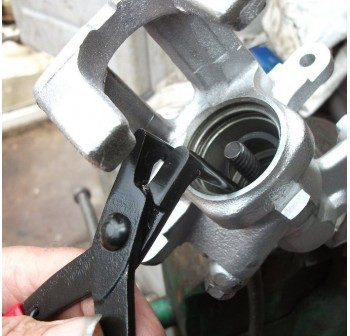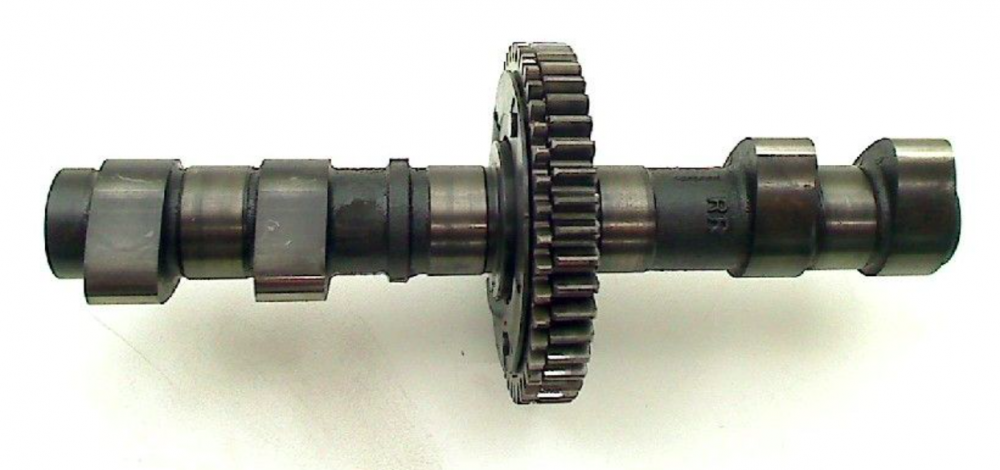-
Posts
181 -
Joined
-
Last visited
-
Days Won
2
Content Type
Forums
Profiles
Gallery
Blogs
Downloads
Events
Everything posted by RC36B
-

VFR 750 knocking sound when clutch is released
RC36B replied to Peka's topic in Maintenance Questions
Congrat on your "new old bike" 😀 I don't get any sound but it's normal with some rattle from the clutch basket. At idle, in neutral and clutch released. Disappears when clutch lever is pulled. If this is the case I would not worry about it. It happens because of wear in the grooves on the clutch basket. Friction plates can wriggle and that results in the rattling sound. -
Check the colors - short black with black/blue. ignition on. Relay is located next to pump - has a 3 wire connector - last wire is red/yellow
-
The fuel cut off relay make sure the pump only can run when engine is turning - the pump will not pulse (run) before you hit start. To test pump disconnect relay and short black blue wires (color from memory)
-

Healtech Esync for carb balancing
RC36B replied to coupedupsubie's topic in Third and Fourth Generation VFR's
A few more but I agree not a bike problem... maybe for use with an old Ferrari V12 with a bunch of carbs 🙂 Honda CBX, Benelli, Kawasaki Z1300... and a few other oddities (race bikes) -
Yes, I know... not a VFR, hell, not even a V4 but an I6... and Japanese language... at least it's a Honda... this gotta be an engine equivalent of a x-rated show 🙂 Fascinating to watch the total disassembly of the engine... From a time with flat/philips head screws and nuts... in the end the whole crank is removed with pistons still attached... tiny tiny pistons...
-
- 1
-

-

Engine completely cuts out during acceleration
RC36B replied to dtron's topic in Sixth Generation VFR's
If tach zeros forget about non electrical issues. You say you checked the ground. It can be a bad positive connection too... broken wire, corroded connection, short etc. I would check all primary wires as first step - disconnect or disassemble to clean and check alle the way to ignition switch. when it died completely, did the oil light come on? Did the starter turn at once?- 14 replies
-
- sixth gen
- bad grounds
-
(and 1 more)
Tagged with:
-
I have a consistent 1.1 mm on a 1996. I was surprised about the number - will look again in the morning with better light
-
I installed LED lights in my cluster and thought they gave off a sick amount of light... I sprayed the LED's with a thin coat of black spray paint - that worked well... almost like shades... 😎
-
I checked my voltage at about 5600 RPM - while driving, light off, USB charger off.... 14.3-4 volt
-
90-93: RC36/1 94-97: RC36/2
-
Hi Grum - too much beer last night ... you photographed 2 new sprockets...! Visible wear could easily be lens distortion... And I thought everything get "blasted" with all the sand you have out there... Do you use link or rivet?
-
I need a 3rd gen too... I really want one again - they are still nice looking in a more classic way than the 4th. Of course it does not look like bikes today but for something 29 years old... The build quality and materials are not found in any bike today... of course part of that is a really heavy bike - is't about 5-10 kg heavier than the CBR 1000RR, which actually is a heavy bike too... I look forward to a bunch of workshop photos Take care and thanks for sharing
-
Welcome to the forum! That's the nice things with these older bikes - not too much black box going on. Good old fashion skills go along way 🙂 Please let's so some pictures...
-
Great - I hope they are in good shape! Don't throw away the broken one - it can still serve a purpose... it can be taken apart and measured. VFRD should create a category or something for old eol parts...
-
Your best option is sourced from a junkyard. This would still be old diaphragms tho Honda used them for bikes up to about 2007. I'm not sure the need is sufficient to make new ones as demonstrated by the past fizzles. I think we need to preserve old ones before we are screwed.
-
I have nothing nice to say about that project or the build quality - so maybe better I shut up before I get started 🤣
-
I get the feeling you really don't seek any advise - you have already made up your mind that select parts (see above) from a 95 VFR 750 can be made to fit the RC46. So, all I can say is... Park next to a VFR 750 and compare the parts you mention. I hope it works out for you 🙂 The whole exercise about not changing part numbers have to do with Honda being "cheap" - they want as few parts to service as many bikes as possible... this is a main reason why we can still get most parts to old bikes - they service a whole range of bikes! For example... on my old VFR 750 the forks have a RING,OIL STOPPER with part number 51447KA4711. This part was first introduced on the 1981 CR 250 and is used on current models today. So the same part number for a part for almost 40 years...
-
The easiest way to get an idea about a part being interchangeable is to use a partsdatabase - e.g. cmsnl.com. Select a 1998 VFR 800. Find the parts you would want to replace. Example: BRKT SUB ASSY,R F with partnumber 06453MBG405 The tag on position 6-8 of the partnumber (known as Model Code) tell which model this part was originally used with - "MBG" is the VFR 800F RC46. So the chance is you can't use a RC36/2 part. The RC36/2 have the MZ7 tag for parts first introduced on this model. You have to use common sense too - "big parts/assemblies" will usually only work on specified model whereas a brake pad with a "new" model tag may be compatible backwards. Other VFR Model Codes can be found here (we don't have a list on VFRD?) You will notice the RC46 have a lot of new parts - it was not at all a bored up VFR 750 with a new paint job... it really was a brand new bike
-
Short answer: nothing
-
So what exactly are you trying to achieve...? 🤣🤣
-
You can wire it to the any of the fuses ("fused side") except clock and fan. Locate the Black/Brown wire ("fused side" fuse A), this or any of the next 4 fuses same side. You can find minus at various locations - a "certified" minus terminal is on the right side of frame below tank. Alternatively connect to terminals on instrument cluster - fuel or temp gauge. A good location - but best if you need to replace bulbs anyway... 🙂
-
On my 96 VFR I have installed a voltmeter in the dash - same voltages 13.5-6 V lights on (2 x 55 W headlight) and 14.4 no lights. I always have lights on, so would know the "light load" voltage at 5600RPM. I will check next time... we are not under lockdown as France (please get better soon) and full insurance cover (not only mandatory 3rd party damage) in force from today! Everybody - take care, keep those hands spotless, keep your distances and stay in the little shed with the bike 🤨
-

1992 vfr750 front brake master cylinder service
RC36B replied to Siborg's topic in Maintenance Questions
If you have straight or fat pliers then you are gonna get a stroke before you get that clip out... 🤯 -
The gears - once removed - will relax in a “neutral” un-tensioned position, which is about half a tooth off. So the answer is “no” - you are imagining a problem which does not exist 😉 So when torqued down Newton's third law takes care of the gears final position. You need to check timing marks AFTER torqued (especially for front cams). If you look at below photo you can see the geometry only will allow for aligning gears in one direction... the gear from the cassette only fits the wide slot.
-
The gears are stamped so no problem. Even if you removed all cams and got lost on position, the shop manual have an easy to follow procedure (shop manual 61MZ700 from page 8-21 (Camshaft installation) onwards). Cams have both "marks" (line) and "arrows" - Honda use the "marks" for the rear cylinders and arrows for the front cylinders.






